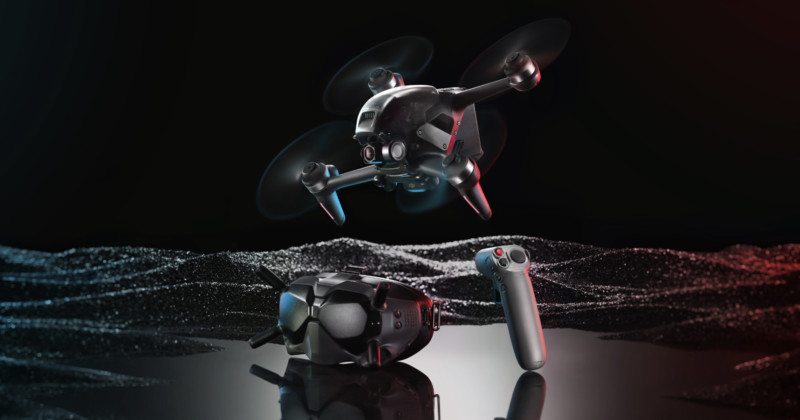
DJI has announced the FPV, a new type of drone for the company that is made specifically for the first-person, high-speed flight experience found in racing with pointed adjustments to make the experience a step up from the conventional options.
The FPV is a racing drone first, but it tackles the main pain-points of racing drones head-on that allows it to offer creative applications not typically available on drones designed for speed and racing performance. First, it manages to provide a better viewing experience than typical racing drones thanks to DJI’s OcuSync technology. It features a first-person perspective in extremely low-latency and high definition to allow pilots to react quickly to flight paths and see the details of the flight more brightly and crisply than before.
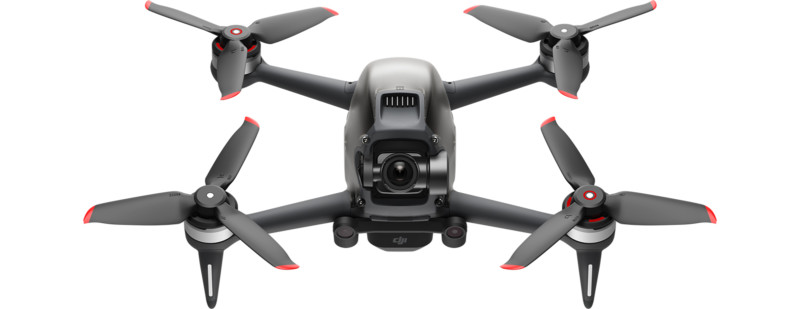
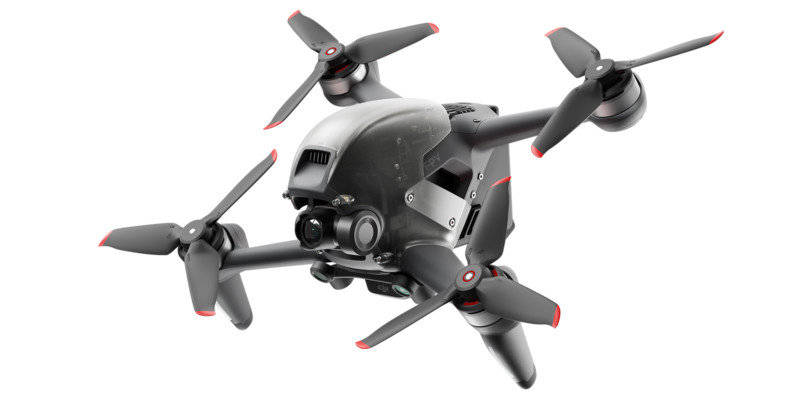
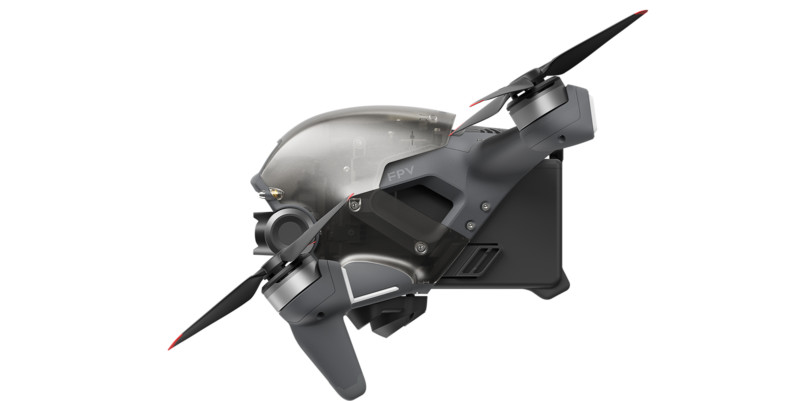
“DJI FPV lets you see the world in a new way using the absolute latest in HD transmission technology,” DJI writes. “Pilots can see a crystal-clear, long-range, low-latency feed from the DJI FPV aircraft while wearing the DJI FPV Goggles V2. State-of-the-art racing motors offer high-speed action during flights.”
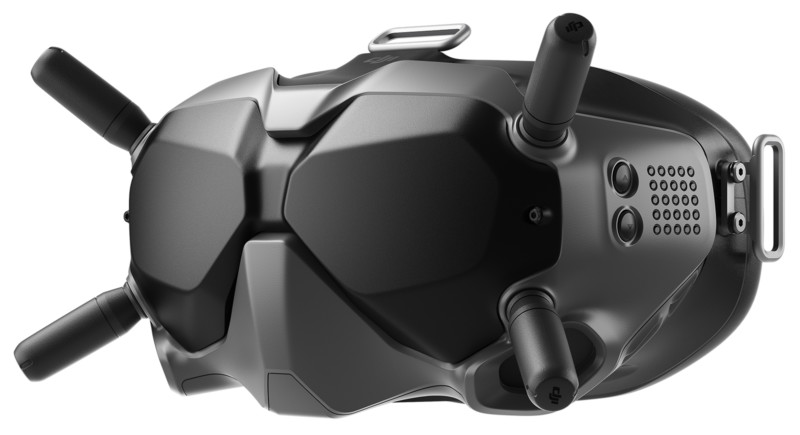

DJI says its wireless communication system allows “unmatched” reliability, freeing pilots to take advantage of the FPV’s incredible max speed of 140 kph (87 mph) and max acceleration of 0-100 kph (0-62 mph) in just two seconds.
“O3 transmission is the next step in FPV transmission technology,” DJI continues. “It offers a 10-kilometer transmission range, auto-switching dual-frequencies, a high bitrate of 50 Mpbs, and state-of-the-art anti-interference methods to ensure a reliable feed.”
Because of the latency involved with digital signals, to this point racing drone pilots have been using a far lower resolution analog video transmission. DJI hopes that its technology shown in the FPV can close the performance gap and show that digital signal can be as effective for low latency as analog, but provide a far better viewing experience.
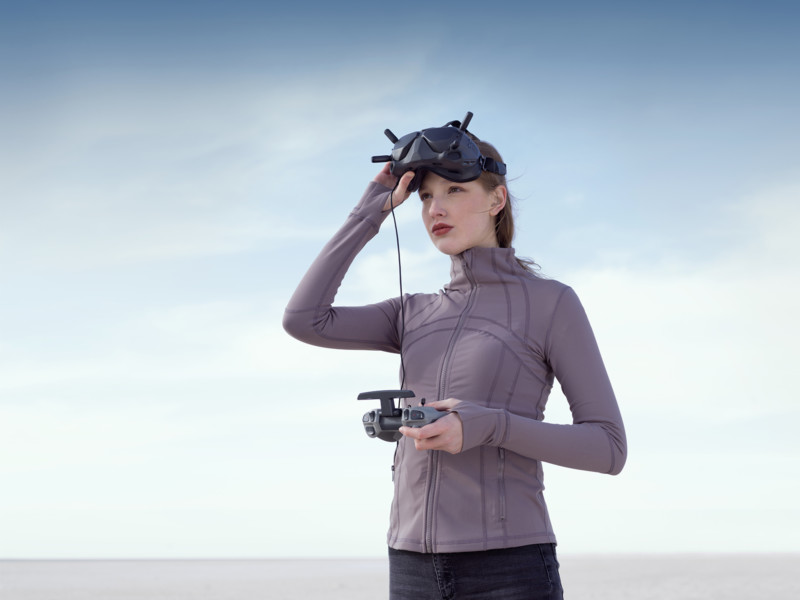
Pilots can choose from several different viewing options, including:
Standard low-latency HD mode: Transmits footage in 1440x810p in either 60 fps with a wider 142-degree field of view (FOV), or 50 fps with 150-degree FOV. In this mode, latency is as low as 40 milliseconds.
Smooth mode: This mode unlocks higher framerates for a more “cinematic” look and latency is decreased to less than or equal to 28 milliseconds. Resolution is 1440×810 at 120 fps with a 142-degree FOV or 100 fps at 150-degree FOV.
Audience mode: The pilot can share their perspective in this mode which can connect to up to eight additional goggle sets.
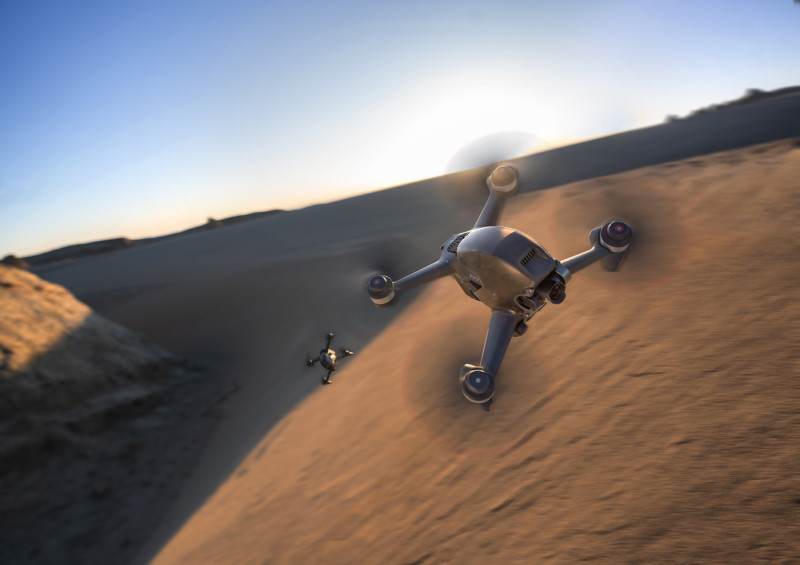
Next, DJI built-in features that allow seasoned pilots, as well as beginners, to fly with confidence through three distinct modes:
Normal (N) Mode: During N mode operation, DJI FPV operates similar to other DJI drones, hovering in place with the use of GPS and/or visual positioning systems (VPS) on the bottom of the drone. The most approachable flight mode, N mode allows for obstacle detection sensors on the front to be activated to warn when obstacles are near and slow down. Pilots are tasked with maneuvering the drone away from any detected obstacles.
Manual (M) Mode: Take full control over the drone with M mode which is designed for more experienced users. While in M mode, all sensors and hovering features are disabled.
Sport (S) Mode: A new hybrid blend of M and N mode, S mode offers some of the dynamic movement capabilities that come with M mode along with some of the key safety features of N mode. S mode is the middle step between the three modes and developed to give pilots more room to explore their skills as they get accustomed to FPV flight.
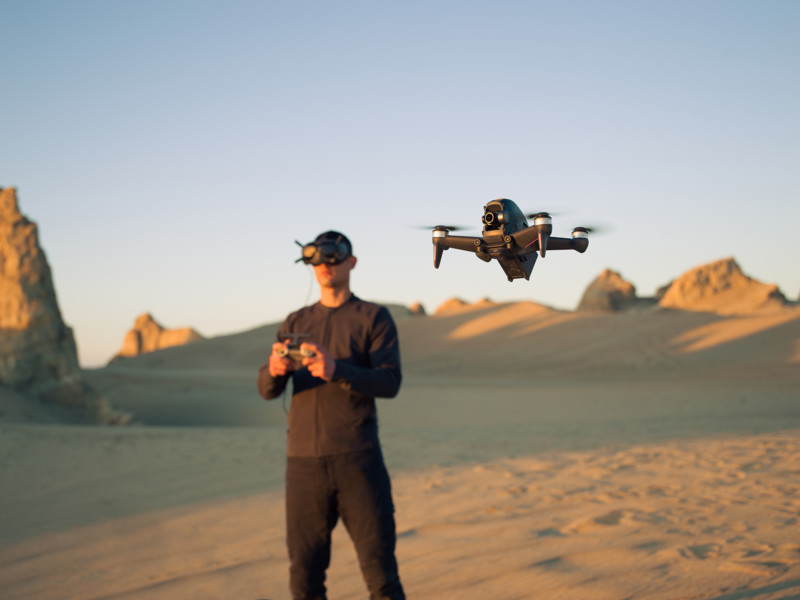
Added to that, DJI seems to recognize that a major issue with FPV racing drones is their propensity for crashes. To help mitigate this and make beginners feels a bit better about putting on the goggles, the company has added a dedicated Emergency Brake and Hover feature which are available in all flying modes to make the drone stop and hover in place at any time during a flight.
As mentioned, the FPV also features obstacle detection sensors which can be disabled for veteran pilots but will prove extremely useful to newcomers. Visual Positioning Sensors (VPS), along with an auxiliary light on the bottom of the aircraft are also available to assist in smooth takeoffs and landings.
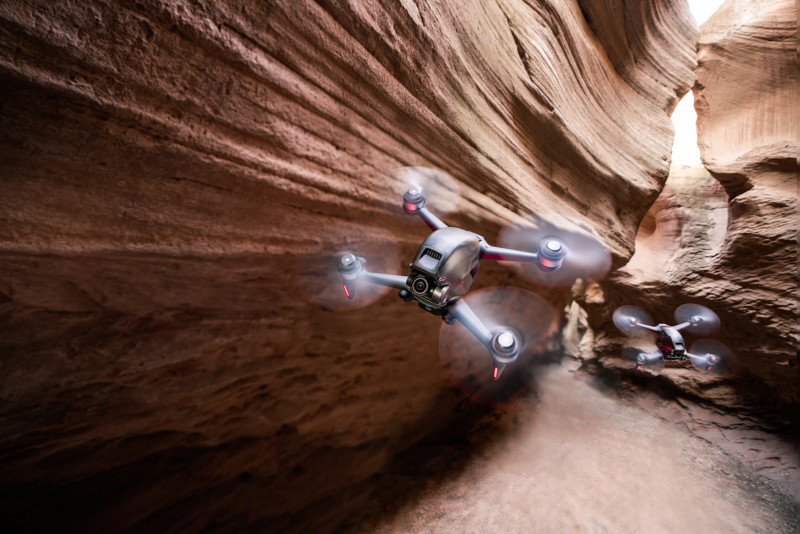
Just like with other DJI drones, the FPV also features a “Failsafe Return to Home” feature that brings the drone back to its original takeoff point with the press of a button or in the event transmission signal is lost. Finally, the ADS-B receiver system notifies the pilot when traditional aircraft such as airplanes or helicopters equipped with ADS-B transmitters are in the vicinity.
Additionally, many of the components are modular and easily swappable such as the gimbal, motors, shells, and sensors. Given the stress many racing pilots put their drones under, being able to quickly and easily access parts to swap them out or repair them is an important aspect of the FPV that DJI didn’t overlook.
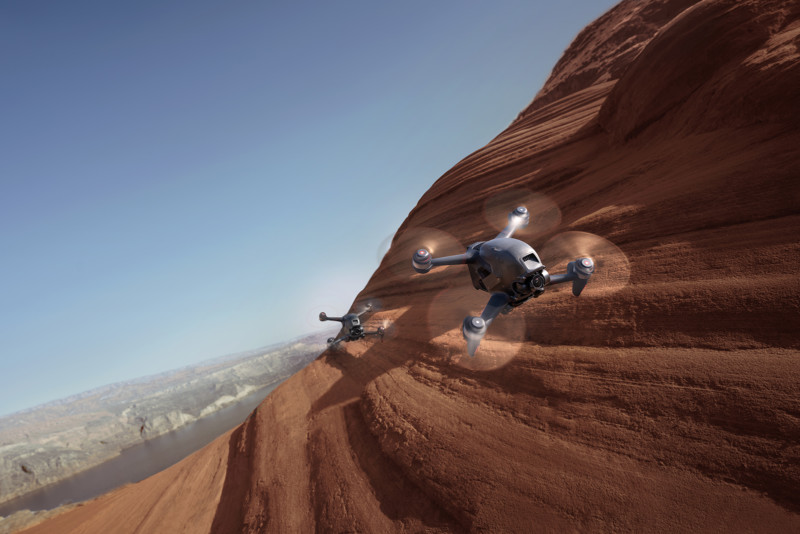
Finally, DJI has equipped the FPV with an integrated 4K camera that can shoot up to 60fps at 120 Mbps on a single-axis gimbal which it says provides stability during intricate maneuvers while rotating vertically for unusual angles. The camera also uses DJI’s rockSteady stabilization technology to smooth shaky footage and eliminate “the global shutter effect when filming fast-moving scenes.” The camera can also capture up to 120 fps in Full HD 1080p and any video footage can be written either as H.264 or H.265 to an onboard memory card.
DJI offers two ways to control the drone: pilots can use the included game-console-style controller or opt for the single-handed Motion Controller that is sold separately.
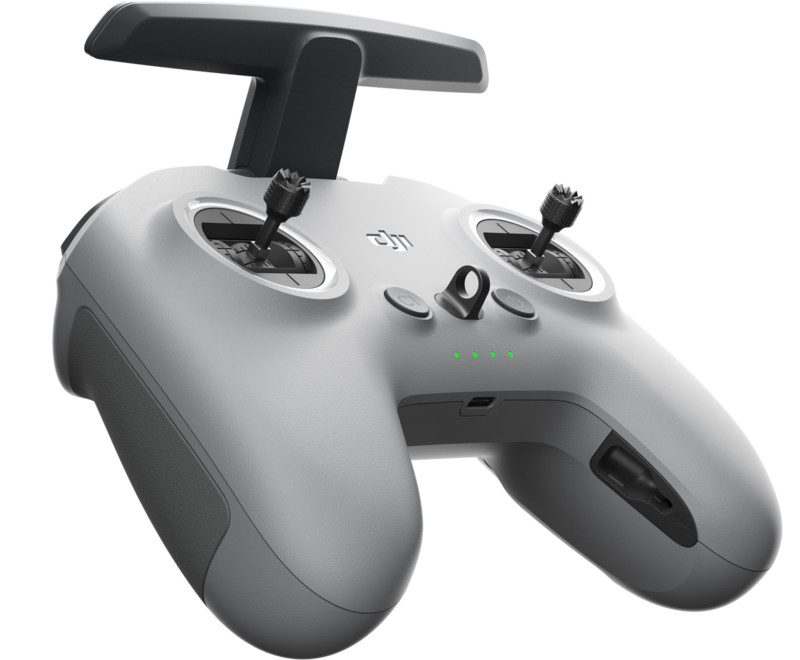
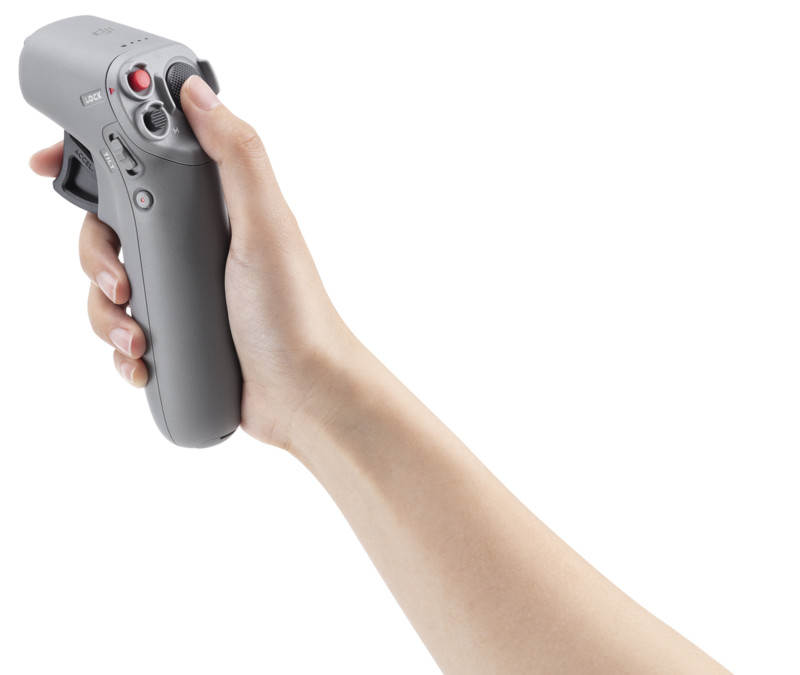
The DJI FPV is available today in a few different configurations. The standard DJI FPV Combo includes the FPV drone, remote controller 2, FPV Goggles V2, all required cables, and one battery for $1,299. The DJI FPV Fly More Kit is also available, which includes two additional Intelligent Flight Batteries and the dedicated charging hub for $299. The optional Motion Controller is sold separately and can be purchased for $199.